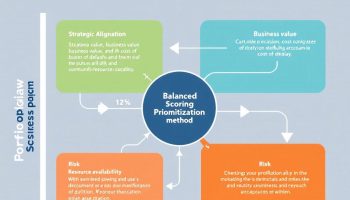
Understanding Agile Methodology
Agile explained simply means revolutionizing project management through a flexible, collaborative approach that prioritizes people and adaptive solutions over rigid processes. By breaking down complex projects into manageable iterations and focusing on delivering continuous value, agile methodologies have transformed how teams across industries approach project delivery and problem-solving.
Key Takeaways
- Agile prioritizes individuals and interactions over strict processes, enabling more creative and efficient problem-solving.
- Working solutions take precedence over comprehensive documentation, focusing on delivering immediate value.
- Customer collaboration is continuous, ensuring the final product meets actual needs rather than perceived requirements.
- Change is embraced as an opportunity for improvement, not a disruption to be avoided.
- Agile represents a mindset of adaptability, transparency, and consistent value delivery.
“Agile transforms project management into a dynamic collaboration that values people and creativity over rigid processes, fostering continuous improvement and immediate value delivery. By embracing change as an opportunity and prioritizing customer collaboration, Agile empowers teams to adapt and innovate in an ever-evolving landscape.”
Foundational Values of Agile Explained
The core of agile explained begins with its four fundamental values outlined in the Agile Manifesto, revolutionizing how projects are managed across industries. These values serve as guiding principles that have transformed traditional project approaches into more adaptive and responsive methods.
Agile explained simply means prioritizing individuals and interactions over rigid processes and tools. This people-centric approach recognizes that effective communication and collaboration drive project success more than standardized procedures. When team members can freely interact, problem-solving becomes more efficient and creative solutions emerge naturally.
Working solutions take precedence over comprehensive documentation in the agile explained framework. Rather than spending excessive time documenting every detail before development begins, agile teams focus on delivering functional products that provide immediate value. This doesn’t eliminate documentation but reduces it to what’s necessary for effective project collaboration and knowledge transfer.
Customer collaboration represents another critical value in agile explained methodologies. Instead of negotiating contracts and specifications at project initiation, agile teams work closely with customers throughout development. This ongoing partnership ensures the final product meets actual needs rather than perceived requirements, significantly enhancing stakeholder satisfaction and project outcomes.
The fourth value emphasizes responding to change over following a predetermined plan. Traditional project management often resists modifications, viewing them as disruptions. Agile explained approaches embrace change as an opportunity to improve the product, making adaptability a competitive advantage rather than a challenge to overcome.
The Twelve Guiding Principles
Beyond these four values, agile explained further encompasses twelve principles that provide practical guidance for implementation:
- Customer satisfaction through early and continuous delivery of valuable software
- Welcoming changing requirements, even late in development
- Frequent delivery of working software
- Daily cooperation between business stakeholders and developers
- Building projects around motivated individuals and supporting their needs
- Face-to-face conversation as the most efficient communication method
- Working software as the primary measure of progress
- Maintaining a sustainable development pace
- Continuous attention to technical excellence and good design
- Simplicity—maximizing work not done
- Self-organizing teams creating the best architectures and designs
- Regular team reflection and adjustment to improve effectiveness
These principles support continuous improvement and foster a culture where agile explained isn’t just a methodology but a mindset that values people, adaptability, and tangible results. By embracing these foundational values, your teams can create a responsive environment where projects consistently deliver meaningful business value.

Agile Methodologies: Frameworks and Approaches
Agile explained simply means breaking down complex projects into manageable iterations that deliver value quickly. Originally designed for software development, agile methodologies now transform project management across various industries through their adaptability and collaborative approach.
The agile landscape offers several frameworks that implement agile values differently. When selecting an approach for your projects, consider these primary methodologies:
Key Agile Frameworks
Scrum represents the most widely adopted agile framework, operating in fixed-length sprints typically lasting 1-4 weeks. This project delivery framework assigns specific roles including Product Owner, Scrum Master, and Development Team. Each sprint includes planning, daily stand-ups, review, and retrospective meetings to ensure continuous improvement.
Kanban focuses on visualizing workflow and limiting work-in-progress to optimize efficiency. This agile explained approach doesn’t use fixed sprints but maintains a continuous flow of work items through clearly defined stages. Teams pull work items from a prioritized backlog when capacity becomes available, making it ideal for operational or support-focused environments.
Lean principles complement agile explained methodologies by eliminating waste and maximizing value. Originally from manufacturing, Lean emphasizes delivering only what customers need, reducing bottlenecks, and minimizing unnecessary documentation. This approach works well for continuous improvement initiatives.
Extreme Programming (XP) concentrates on technical excellence through practices like pair programming, test-driven development, and continuous integration. This intensive agile explained methodology works best for software development teams facing rapidly changing requirements.
These methodologies implement agile explained principles through different structures:
| Framework | Iteration Style | Best For | Key Feature |
|---|---|---|---|
| Scrum | Fixed sprints (1-4 weeks) | Projects with evolving requirements | Defined roles and ceremonies |
| Kanban | Continuous flow | Support and operational work | Visual workflow management |
| Lean | Continuous improvement | Efficiency-focused initiatives | Waste elimination |
| XP | Short iterations | Software development | Technical excellence practices |
Many organizations adopt hybrid approaches combining elements from different frameworks based on their specific needs. Your project manager job role might require adapting these methodologies to fit your organizational context.
Implementing agile explained methodologies requires more than process changes—it demands cultural shifts toward transparency, collaboration, and continuous learning. Teams must embrace frequent inspection and adaptation cycles to truly benefit from the agile approach.
Regardless of which framework you choose, all agile methodologies share core principles: delivering value early and often, embracing change, maintaining a sustainable pace, and focusing on customer needs. These foundations make agile explained approaches powerful tools for modern project management.
According to a report by the Project Management Institute, organizations that embrace agile practices see a 71% increase in the likelihood of project success compared to those that don’t.
pmi.org
Comparing Agile and Traditional Project Management
Project management has evolved significantly over the years, with agile explained as a revolutionary approach that’s transformed how teams deliver value. The contrast between agile and traditional (often called waterfall) methodologies represents a fundamental shift in project execution philosophy.
Agile project management breaks work into small, manageable iterations called sprints, typically lasting 1-4 weeks. This approach enables you to adapt quickly to changing requirements and deliver working solutions incrementally. Traditional methods, however, follow a sequential process where each phase must be completed before moving to the next.
| Factor | Agile | Traditional |
|---|---|---|
| Planning | Iterative, evolving | Comprehensive upfront |
| Requirements | Flexible, can change | Fixed after initial phase |
| Deliverables | Incremental, frequent | Single delivery at end |
| Stakeholder involvement | Continuous throughout | Primarily at beginning and end |
| Documentation | Minimal, focused on essentials | Extensive, detailed |
| Team structure | Self-organizing, cross-functional | Hierarchical, specialized |
| Risk management | Early identification through iterations | Upfront risk assessment |
Choosing the Right Approach
When deciding between agile and traditional methods, consider your project’s unique characteristics. Agile explained simply means embracing flexibility and collaboration – making it ideal for projects where:
- Requirements may evolve or aren’t fully defined
- Stakeholder feedback is crucial throughout
- Early delivery of partial functionality adds value
- Teams need autonomy to solve complex problems
Traditional approaches work better when:
- Requirements are stable and well-understood
- The project scope is fixed
- Regulatory compliance demands extensive documentation
- Predictability in timeline and budget is paramount
Many organizations implement a hybrid approach, combining elements from both methodologies. For complex initiatives, project delivery frameworks might incorporate agile principles within a more structured governance model.
The effectiveness of agile is most apparent in its outcomes. Projects using agile methodologies typically report 28% higher success rates than traditional approaches, according to industry surveys. By embracing continuous improvement and project communication practices core to agile, you’ll foster stronger team collaboration and create more opportunities to deliver exceptional results.
Remember that agile explained properly isn’t just about changing processes—it’s about shifting mindsets toward adaptability, transparency, and customer value. The transition requires patience, but the benefits of enhanced flexibility and improved product quality make the effort worthwhile for many organizations.
Projects using agile methodologies typically report 28% higher success rates than traditional approaches, according to industry surveys.
hbr.org
Benefits and Challenges of Agile Adoption
When implementing agile methodologies, you’ll quickly discover their potential to transform your project management approach. Agile simply means breaking work into small, manageable increments that deliver value faster than traditional methods. This iterative approach has revolutionized how teams operate across industries.
Key Benefits of Agile Implementation
The advantages of adopting agile practices extend far beyond just faster development cycles. Here are the primary benefits you’ll experience:
- Accelerated Value Delivery: By prioritizing working features over comprehensive documentation, agile teams deliver functional products to market significantly faster. This approach, as agile explained by practitioners, focuses on completing small increments that provide immediate value.
- Enhanced Product Quality: Regular feedback loops and continuous testing ensure that quality is built into the product from the start. Project integration management becomes more effective with agile’s emphasis on frequent inspection and adaptation.
- Improved Team Morale: Self-organizing teams in agile environments report higher satisfaction due to increased autonomy and purpose. Team members gain ownership of their work, leading to greater engagement and productivity.
- Greater Market Adaptability: Agile approaches allow you to pivot quickly based on changing market conditions or customer feedback. Strategic project execution becomes more responsive when using agile methodologies.
- Transparent Progress Tracking: Visual management tools like burndown charts make progress visible to all stakeholders, reducing surprises and enhancing confidence in delivery timelines.
Despite these advantages, agile implementations face several common challenges:
- Organizational Culture Shift: Traditional companies often struggle with the fundamental mindset change required for agile practices to flourish. The shift from command-and-control to trust-based leadership can meet resistance.
- Consistent Stakeholder Engagement: Agile methodologies require active, ongoing participation from business stakeholders, which can be difficult to maintain throughout project lifecycles. Stakeholder satisfaction depends on their consistent involvement.
- Scaling Complexity: While agile concepts work well for small teams, scaling across large organizations introduces coordination challenges that require specialized frameworks like SAFe or LeSS.
- Documentation Balance: Finding the right level of documentation remains challenging, as agile principles emphasize working solutions over comprehensive documentation without eliminating documentation entirely.
- Resource Allocation: Teams may struggle with the need to maintain dedicated resources throughout iterative development cycles, particularly in matrix organizations where team members have multiple responsibilities.
For successful agile adoption, you’ll need to balance these benefits and challenges through thoughtful implementation strategies tailored to your organization’s specific context. Agile explained properly isn’t a one-size-fits-all solution but rather a flexible approach that can be adapted to various project types and organizational cultures.

Implementing Agile: Strategies for Success
Adopting Agile explained methodologies requires careful planning and strategic implementation. You’ll need a comprehensive approach that addresses both technical and cultural aspects of your organization. Agile explained simply means breaking down complex projects into manageable iterations that deliver value incrementally.
Essential Agile Implementation Strategies
Start your Agile journey with these proven implementation strategies:
- Begin with a pilot project to demonstrate value before organization-wide rollout
- Invest in proper Agile training for team members and stakeholders
- Establish dedicated cross-functional teams with clear roles and responsibilities
- Create a physical or digital visual workspace for transparency
- Implement daily stand-up meetings to improve communication
- Develop a rhythm of regular retrospectives for continuous improvement
- Focus on delivering working increments at the end of each sprint
The transition to Agile requires thoughtful project leadership that champions the methodology’s core values. Remember that Agile explained in practice means valuing adaptability over rigid planning and embracing change as an opportunity rather than a threat.
Measuring success in Agile implementation demands different metrics than traditional approaches. The following table highlights key metrics to track when implementing Agile:
| Metric | Description | Why It Matters |
|---|---|---|
| Velocity | Amount of work completed per sprint | Helps in planning and predictability |
| Cycle Time | Time from work start to completion | Identifies process bottlenecks |
| Customer Satisfaction | Feedback from stakeholders | Ensures value delivery |
| Team Morale | Engagement and satisfaction | Supports sustainable development |
Effective stakeholder engagement remains crucial for Agile success. You must maintain continuous communication and collect regular feedback to ensure the product evolves in alignment with business needs. Agile explained throughout your organization creates a shared understanding that enables better collaboration and outcomes.
Tools play a vital role in supporting Agile practices. Choose solutions that facilitate backlog management, sprint planning, and progress visualization. Popular options include Jira, Trello, and Azure DevOps, but the specific tool matters less than how it supports your Agile processes.
Cultural transformation often presents the greatest challenge in Agile adoption. You’ll need to foster an environment where Agile explained values like transparency, inspection, and adaptation become second nature. This cultural shift requires patience, as teams must learn to embrace uncertainty and become comfortable with evolving requirements.
Remember that Agile implementation isn’t a one-time event but a journey of continuous improvement. Regular retrospectives help teams reflect on what’s working and what needs adjustment, making the Agile process itself agile.






